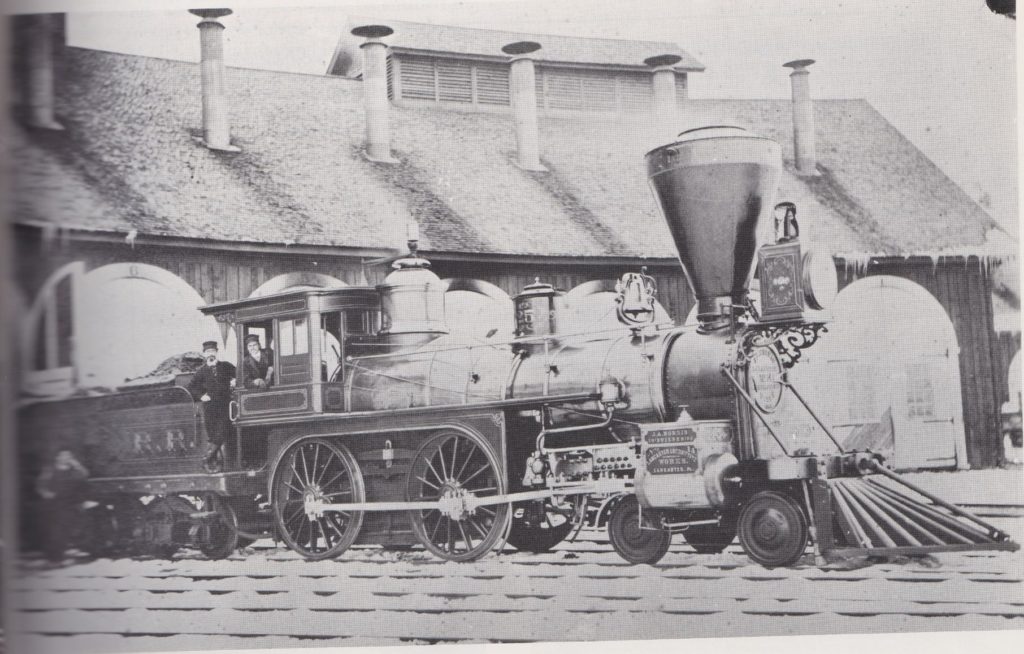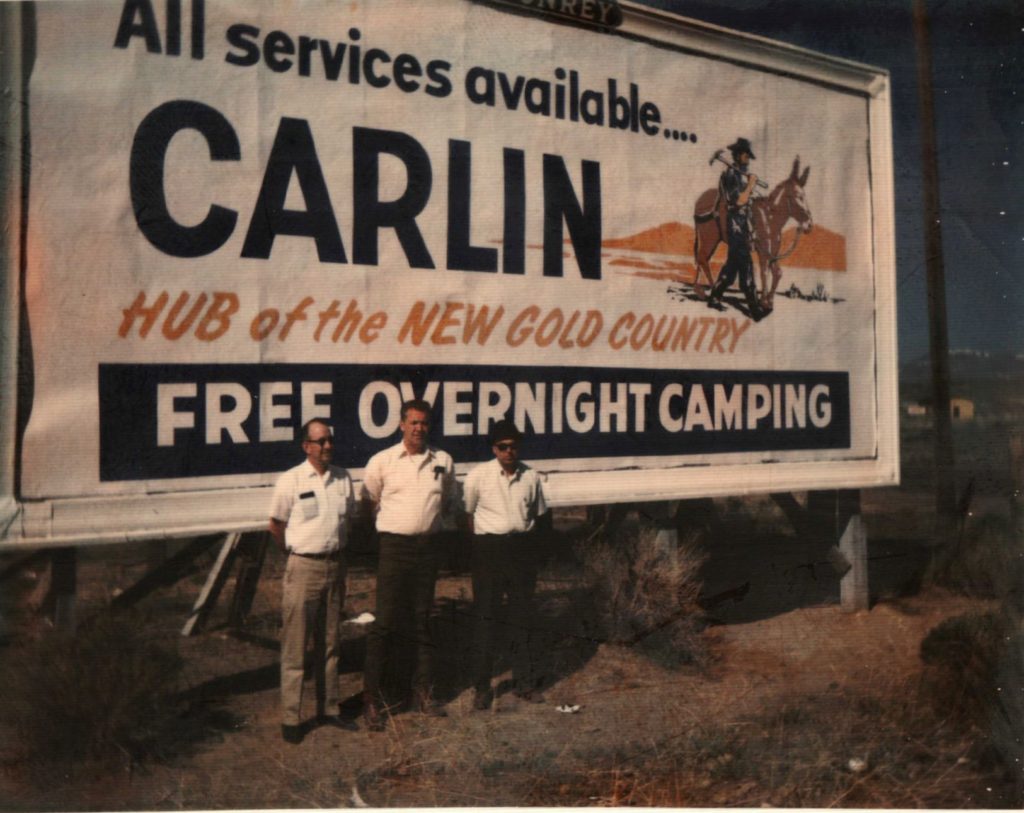The community of Carlin was born with the construction of the transcontinental railroad by the Central Pacific Railroad Company in 1868. The railroad christened the new community Carlin in honor of William Passmore Carlin, a general who served during the Civil War. Prior to the arrival of the railroad, non-natives shared the area with the Shoshone, native inhabitants who practiced a hunter-gatherer lifestyle. After the railroad was built, Carlin prospered because of abundant water sources. The Humboldt River, several creeks, and natural springs meant the area was an ideal location for keeping a railroad running. The Central Pacific Railroad made Carlin the eastern terminus of the Humboldt Division. A town site was laid out and construction began. The railroad built a rail yard with a 16-stall roundhouse, turntable, machine shops, freight house, passenger depot, and housing. By 1869, a United States post office and a school district were formed.

Carlin quickly became an important community in Elko County and the state of Nevada. It was the first established town in Elko County and boasted the only public library in the state. Carlin also served as a hub for various stage lines that connected remote communities with the railroad. The railroad industry attracted a variety of foreign residents, including Chinese and Italians, thus creating a diverse population. The Chinese helped to build the railroad from which Carlin was born. The Italians and Chinese built a thriving business community that consisted of restaurants, groceries, dry goods, and other essential services.

The railroad continued to be the focal point of Carlin into the mid-20th century. The railyard evolved and expanded to meet the needs of a changing industry. Carlin’s abundant sources of water again contributed to the community’s future when one of the largest ice harvesting complexes on the West coast was built in Carlin in the early 1900s. The decline of the railroad began with the replacement of steam engines with those powered by diesel and the introduction of refrigerated railroad cars in the 1940s. The machine shops, roundhouse, and ice ponds were no longer needed. Passenger traffic on the railroad also declined with the emergence of automobiles as the preferred mode of transportation. The Southern Pacific Railroad continued to employ a large number of local workers into the 1960s. Today, almost all traces of the railroad industry in Carlin are gone but the tracks still run through the heart of the town.

Fortuitously, a new industry emerged in the 1960s. Newmont Gold Mining Company discovered a large deposit of microscopic gold just north of Carlin and new processing methods made the production of this type of deposit profitable. The mining industry is to this day the primary industry of Carlin and other nearby communities. The governance of the community was initially managed primarily by the railroad and prominent members of the community. Eventually, the needs of the community outstripped the railroad’s ability to meet them. Carlin adopted its first town charter in 1925 and was officially incorporated in 1971. A gas light power plant was constructed in 1924, a water and sewer system was installed in 1934, and streets were paved by 1940. Today, seven city departments, three boards, and a five-person City Council direct the future of a community with a significant and colorful past.

